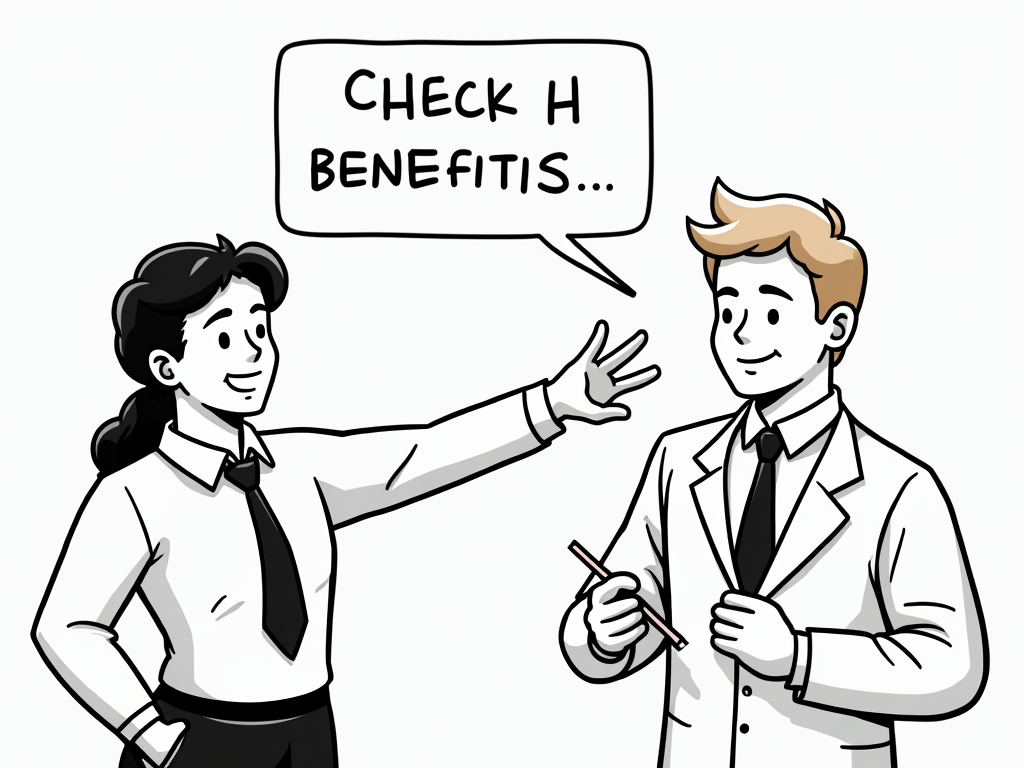
Mastering the Art of Successful Grant Applications in Spain: A Strategic Roadmap
Reading time: 12 minutes
Table of Contents
- Introduction: Navigating Spain’s Grant Landscape
- Understanding the Spanish Grant Ecosystem
- Essential Preparation Steps
- Crafting a Compelling Grant Proposal
- Common Mistakes and How to Avoid Them
- Success Stories: Learning from Experience
- Managing the Application Timeline
- Conclusion: Your Path to Grant Success
- Frequently Asked Questions
Introduction: Navigating Spain’s Grant Landscape
Feeling overwhelmed by the complex maze of Spanish grant applications? You’re certainly not alone. Spain offers a rich tapestry of funding opportunities through national, regional, and European channels, but the path to securing these funds is often lined with bureaucratic hurdles and fierce competition.
Let’s be crystal clear: successful grant writing in Spain isn’t about perfect Spanish or knowing the right people—it’s about strategic preparation, understanding the unique cultural and administrative context, and presenting your project in a way that resonates with Spanish funding priorities.
In this comprehensive guide, we’ll transform the daunting process of Spanish grant applications into a navigable journey, providing you with practical strategies that balance compliance with creativity. Whether you’re a researcher, entrepreneur, non-profit organization, or creative professional, this roadmap will help you transform complexity into opportunity.
Understanding the Spanish Grant Ecosystem
Spain’s grant landscape is diverse and multi-layered, with funding flowing from multiple sources. Before diving into application writing, it’s crucial to understand where the money comes from and what priorities drive funding decisions.
Key Funding Sources in Spain
The Spanish grant ecosystem operates through several distinct channels:
- National Government Programs: Administered through ministries like the Ministry of Science and Innovation, Ministry of Culture, or Ministry of Industry, Trade and Tourism.
- Autonomous Communities: Each of Spain’s 17 regions offers its own funding programs with distinct priorities reflecting local economic needs.
- European Union Funds: Spain is one of the largest recipients of EU structural funds, which are often distributed through national and regional programs.
- Private Foundations: Organizations like Fundación La Caixa, Fundación BBVA, and Fundación Ramón Areces offer significant grant opportunities in specialized fields.
According to the latest data from the Spanish Center for the Development of Industrial Technology (CDTI), Spanish entities received over €13 billion in combined national and European funding in 2022, with success rates hovering around 14% for competitive national grants, underscoring the importance of strategic application development.
Understanding Cultural Context and Priorities
Spanish grant evaluators often approach applications through a distinct cultural lens that values:
- Collaborative approaches that demonstrate strong partnership networks
- Clear social impact beyond economic outcomes
- Alignment with strategic sectors (renewable energy, digital transformation, biotechnology)
- Regional development and territorial cohesion
- International projection that enhances Spain’s visibility
As Dr. Carmen Vela, former Spanish Secretary of State for Research, Development and Innovation, notes: “Successful grant applications in Spain demonstrate not just technical excellence, but also how the project contributes to broader societal challenges and priorities established in national and European strategic frameworks.”
Essential Preparation Steps
Well before the deadline looms, successful applicants lay crucial groundwork that significantly improves their chances of success.
Strategic Research and Positioning
Start with these foundational steps:
- Identify the right funding call: Use resources like Base de Datos Nacional de Subvenciones and European Funding & Tenders Portal to identify opportunities aligned with your project.
- Analyze previous winners: Most Spanish public grants publish information about previously funded projects. Study these to understand what evaluators value.
- Build your consortium strategically: Many Spanish grants favor collaborative approaches. Identify partners who strengthen your application by bringing complementary expertise or regional balance.
- Establish administrative readiness: Ensure you have all required registrations, including digital certificates (certificado digital), registration in the Electronic Registry of the Administration, and any sector-specific accreditations.
Pro Tip: Don’t underestimate the importance of building relationships with the managing authorities. Many Spanish grant programs offer consultation periods where you can clarify requirements and get feedback on your approach before submission.
Administrative and Documentary Requirements
Spanish grants are notorious for their documentary requirements. Prepare these common elements well in advance:
- Certificado de estar al corriente con Hacienda y Seguridad Social: Proof that you’re up-to-date with tax and social security obligations
- Financial statements: Typically for the last 2-3 fiscal years
- Company/organization registration documents
- CVs of key team members in standardized formats (often the CVA or FECYT format)
- Letters of support or commitment from partners or stakeholders
- Technical certifications relevant to your sector
Quick Scenario: Imagine you’re a biotech startup applying for an innovation grant from CDTI. Beyond the project proposal itself, you’ll need to prepare documentation demonstrating your team’s scientific credentials, proof of intellectual property protection, market validation evidence, financial viability, and compliance with bioethical regulations. Starting this process just two weeks before the deadline would be virtually impossible.
Crafting a Compelling Grant Proposal
With your groundwork laid, it’s time to develop the narrative and structure that will make your application stand out.
Understanding Evaluation Criteria
Spanish grant applications are typically evaluated using a scoring system based on published criteria. Common evaluation dimensions include:
| Evaluation Dimension | Typical Weight | Key Elements to Address | Common Pitfalls |
|---|---|---|---|
| Technical Quality | 30-40% | Innovation level, methodological rigor, feasibility | Overambitious objectives, unclear methodology |
| Economic Impact | 20-30% | Market potential, job creation, return on investment | Unrealistic projections, insufficient market analysis |
| Team Capability | 15-20% | Experience, qualifications, complementary skills | Gaps in expertise, lack of project management experience |
| Strategic Alignment | 15-20% | Contribution to policy objectives, sectoral priorities | Generic connections without specific relevance |
| Implementation Plan | 10-15% | Realistic timeline, resource allocation, risk management | Insufficient detail, missing contingency plans |
Structural Elements of a Winning Proposal
While formats vary by program, successful Spanish grant applications typically include:
- Executive Summary (Resumen Ejecutivo): A compelling overview that highlights your project’s uniqueness and alignment with program objectives. This is often the first thing evaluators read.
- Problem Statement and Context (Antecedentes): Clearly articulate the challenge your project addresses and demonstrate your understanding of the current state of the field.
- Objectives (Objetivos): Present SMART (Specific, Measurable, Achievable, Relevant, Time-bound) objectives that align with the call’s priorities.
- Methodology (Metodología): Detail your technical approach, showcasing innovation while demonstrating feasibility.
- Expected Results and Impact (Resultados Esperados e Impacto): Quantify outcomes whenever possible and connect them to broader societal or economic benefits.
- Work Plan (Plan de Trabajo): Break down your project into logical work packages with clear deliverables, milestones, and responsibilities.
- Budget (Presupuesto): Provide a detailed, justified budget that follows program guidelines for eligible costs.
- Dissemination Plan (Plan de Difusión): Explain how you’ll share results and maximize the project’s reach.
María Blasco, Director of the Spanish National Cancer Research Centre, advises: “Spanish evaluators appreciate precision and clarity. Don’t bury your innovative ideas in verbose language or technical jargon. Be direct about what makes your approach novel and why it matters in the Spanish and European context.”
Language and Presentation Tips
- Write in the required language (Spanish or English) with precision and clarity
- Use visuals strategically to break up text and illustrate complex concepts
- Follow formatting guidelines exactly, including font sizes, margins, and page limits
- Incorporate keywords from the call text throughout your proposal
- Balance technical detail with accessibility for non-specialist evaluators
Common Mistakes and How to Avoid Them
Even experienced grant writers make critical errors when navigating Spain’s unique funding landscape. Here are the pitfalls to avoid:
Administrative and Compliance Errors
- Incomplete documentation: Spanish authorities rarely request missing documents after submission. Ensure your application package is complete.
- Missing digital signatures: Many Spanish grants require digital certification. Apply for your certificado digital well in advance.
- Platform submission issues: Spanish electronic submission systems can be temperamental. Test the platform days before the deadline.
- Eligibility oversights: Carefully verify all eligibility criteria, including registry requirements and minimum operational history.
Quick Scenario: A cultural organization applied for a Ministry of Culture grant but was automatically disqualified because their digital signature was provided by the organization’s secretary rather than its president, as specifically required in the call. Despite an excellent project concept, they couldn’t even enter the evaluation phase.
Strategic and Content Weaknesses
Beyond technical errors, evaluators frequently cite these substantive weaknesses:
- Generic proposals not tailored to Spanish priorities or the specific call
- Weak demonstration of innovation compared to the state of the art in Spain and Europe
- Insufficient territorial impact, especially for regional funds that prioritize local development
- Vague or unmeasurable outcomes without specific KPIs
- Underdeveloped sustainability plans that don’t address how benefits will continue after funding ends
- Poor alignment with strategic frameworks like the Spanish Science, Technology and Innovation Strategy or regional Smart Specialization Strategies
Success Stories: Learning from Experience
Examining successful applications provides valuable insights into effective approaches in different sectors.
Case Study 1: Rural Development Innovation
Cooperativa Agrícola La Esperanza, a small agricultural cooperative in Extremadura, secured €380,000 from a regional ERDF program to develop a sustainable irrigation system. Their successful approach included:
- Combining traditional farming knowledge with technological innovation
- Demonstrating clear alignment with the region’s Smart Specialization Strategy, which prioritized agricultural modernization
- Forming partnerships with a technical university and environmental NGO
- Providing robust data on expected water conservation and productivity improvements
- Presenting a clear knowledge transfer plan to benefit the wider farming community
The evaluation committee particularly praised their community engagement approach and the project’s contribution to regional climate adaptation goals.
Case Study 2: Cultural Heritage Digitization
Fundación Memoria Histórica secured €275,000 from the Ministry of Culture for a digital archive project focused on preserving testimonies from Spain’s Civil War period. Key success factors included:
- A clear methodology that addressed both technical digitization standards and sensitive ethical considerations
- Strong letters of support from international academic institutions validating the approach
- A detailed accessibility plan ensuring materials would be available to researchers and the public
- Integration with European digital heritage platforms, demonstrating international relevance
- A compelling narrative that connected the project to broader historical reconciliation efforts
The evaluation highlighted the project’s balanced approach to a sensitive historical topic and its contribution to Spain’s digital cultural strategy.
Managing the Application Timeline
Spanish grant applications require careful scheduling to navigate their complex requirements. Here’s a practical roadmap:
Strategic Timeline Planning
Work backward from the deadline with this recommended schedule:
- 3-4 months before deadline: Identify appropriate calls, review guidelines thoroughly, assemble your team and partners
- 2-3 months before: Develop your core concept, conduct background research, begin administrative preparations
- 6-8 weeks before: Draft the main proposal sections, prepare budget projections, request support letters
- 4 weeks before: Complete full draft for internal review, gather all administrative documents
- 2-3 weeks before: Revise based on feedback, finalize budget, prepare graphics and annexes
- 1 week before: Final proofreading, format check, test electronic submission system
- 2-3 days before: Submit application (never wait until the final hours)
Pro Tip: Spanish grant evaluators often note that applications submitted very close to deadlines show noticeable quality differences from those submitted with ample time to spare. Technical submission issues are also more common in the final hours.
Post-Submission Strategy
Your work doesn’t end with submission:
- Document retention: Maintain complete copies of all submitted materials
- Prepare for clarification requests: Spanish authorities often request additional information during evaluation
- Plan for possible interviews: Some programs include a defense phase
- Develop a response strategy for both positive and negative outcomes
Ana Hidalgo, grant consultant for technology startups in Barcelona, advises: “Even rejected Spanish grant applications provide valuable feedback through evaluation reports. I’ve seen clients transform rejection into success by carefully addressing evaluators’ concerns in subsequent submissions.”
Conclusion: Your Path to Grant Success
Navigating the Spanish grant landscape requires equal measures of strategic thinking, meticulous attention to detail, and cultural understanding. The most successful applicants approach the process as a marathon rather than a sprint, investing time in understanding the specific context of each funding opportunity.
Remember these core principles as you develop your application:
- Strategic alignment with Spanish and European priorities is non-negotiable
- Administrative precision is as important as conceptual brilliance
- Strong partnerships enhance credibility and impact
- Balancing innovation with feasibility captures evaluators’ attention
- Clear, quantifiable outcomes demonstrate serious planning
With thorough preparation, strategic positioning, and attention to Spain’s unique funding culture, you can transform the complex grant application process from an administrative burden into a strategic opportunity to advance your organization’s mission while contributing to Spain’s development priorities.
Frequently Asked Questions
How important is it to write my application in Spanish rather than English?
This depends entirely on the specific requirements of each call. National and regional Spanish programs typically require applications in Spanish, though some innovation and research grants accept or even prefer English. European programs managed in Spain often accept both languages. When given a choice, consider your audience—technical evaluators may be comfortable with English, while regional development committees might prefer Spanish. If your Spanish writing skills are limited, it’s worth investing in professional translation rather than submitting a grammatically flawed application, as this can undermine your credibility regardless of your project’s merits.
How can small organizations compete effectively against large institutions for Spanish grants?
Small organizations can leverage several strategic advantages in the Spanish grant ecosystem. First, many programs explicitly reserve funding for SMEs or have separate evaluation tracks with adjusted criteria. Second, demonstrate your agility and efficiency—highlight how your lean structure allows for innovation and adaptation. Third, form strategic consortia with complementary partners to enhance your capabilities. Finally, emphasize your local impact and connection to specific communities or territories, particularly for regional funds. Spanish evaluators often look favorably on projects that demonstrate inclusive growth and territorial cohesion, areas where smaller organizations can excel with the right approach.
What’s the most effective way to handle budget preparation for Spanish grants?
Budget preparation for Spanish grants requires balancing ambition with realism while strictly adhering to eligible cost categories. Start by thoroughly reviewing the financial guidelines, as Spanish programs often have specific rules about maximum percentages for different cost categories. Document every assumption behind your figures and be prepared to justify them. Include sufficient detail in budget narratives to show thoughtful planning, particularly for personnel costs which often receive extra scrutiny. Consider consulting with financial experts familiar with Spanish grant accounting norms, as errors in budget presentation can trigger audits later. Finally, demonstrate cost-effectiveness and good value for money rather than simply maximizing the requested amount—evaluators look favorably on efficient resource allocation that maximizes impact per euro.



